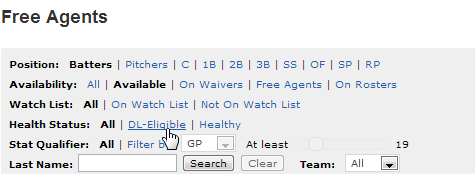I probably spend four to six hours commuting to work each week, so I’ve become a huge fan of podcasts as a medium to keep up-to-date on my MLB and fantasy news. Then I recently came across the OverDrive Media Console app which allows me to check out audio books from my local library for free.
After browsing the selection of available books, I was unable to find anything sabermetrically inclined. Nothing by Bill James. Nothing even baseball-related.

It sounded like something I could potentially apply to fantasy baseball, so I gave it a shot.
What It’s About
Turns out there were a lot of connections I could draw to this silly game we play. Our brains have two main thought patterns; fast and slow. Or an instinctual center (System #1) that makes fast assessments and decisions, and a more powerful and deliberate thought center (System #2) capable of in-depth analysis. This video does a great job of explaining the differences between the two systems and even illustrates, if we’re not aware, how the fast thinking system can make incorrect decisions and assessments.
Lesson #1 – We Often Make Very Important Decisions Using Only System #1
One of the anecdotes Kahneman offers is that of a CEO of a large investment company that explained his investment in Ford Motor Company because he, “liked the cars”. Nothing about company earnings, the cost of the stock, quality of leadership, or competitive advantage.
That doesn’t sound like a thorough decision-making process if you were just buying a car for yourself, let alone investing millions of dollars.
We do this in fantasy baseball. We might pick up a player based only on surface stats, without looking at underlying stats like strike out rates, HR/FB, or BABIP.
Or we might drop a valuable player for just the opposite reasons. Making only snap judgements using system #1 and not thoroughly analyzing factors that could make a player’s current stats deceiving or without looking at what a future projection looks like in spite of past performance.
Lesson #2 – System #1 Cannot Be Shut Off. But You Can Control It With Awareness.
 Think of the popular optical illusion shown here. Continue reading “Five Lessons About Fantasy Baseball Decision Making”
Think of the popular optical illusion shown here. Continue reading “Five Lessons About Fantasy Baseball Decision Making”
